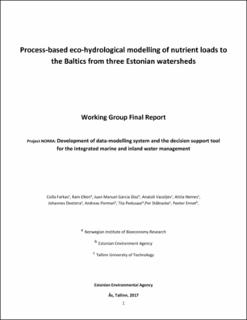| dc.description.abstract | It is now evident that fresh- and marine-water ecosystems have long been overloaded by nutrients that originate, among others, from land-based agriculture, and the manifold point-type anthropogenic sources, such as waste-water treatment plants. The situation in this sense is rather acute in the Baltic countries and their waters. This situation will not improve until we identify the true sources and pathways of pollutants and quantify their contribution, advance our process-understanding to describe the mechanisms through which the pollution occurs, and by what steps we may be able to influence that, and quantify what, if any such steps – today popularly termed ‘mitigation measures’ – may produce certain levels of benefit sustainably.
Various advancements have already been made in a number of the above steps, but the applied mitigation measures are often local and scarce, their effects are often influenced by other unknown and uncontrolled factors, and their installation is too recent to yield noticeable changes due to e.g. the nutrient retention characteristics of the ecosystem. It is therefore of paramount importance that we monitor and use environmental data towards long-term planning in order to sustain or improve the state of our environment. Environmental modeling is a growingly important tool for future planning. One main branch of such modeling – the use of process-based models – is a generally data intensive, but in exchange rather detailed way of quantifying natural processes.
As part of the greater context of the NORRA project, this Working Group reports on its work towards (a) cataloguing existing environmental data for selected pilot-watersheds of Estonia that are needed to run process-based simulation models for those watersheds; (b) identifying suitable, and feasibly usable models, and calibrate, validate and test them under Estonian conditions; (c) evaluating the models’ performance and capability to become decision support tools; and (d) and advising on data and knowledge gaps towards further future progress. | en_US |
